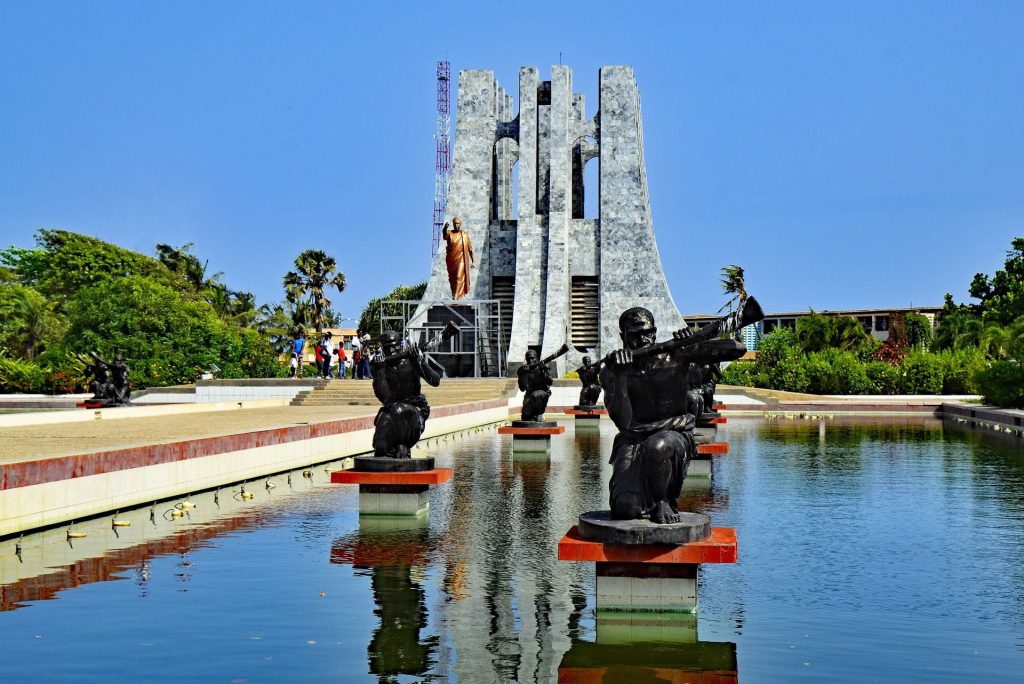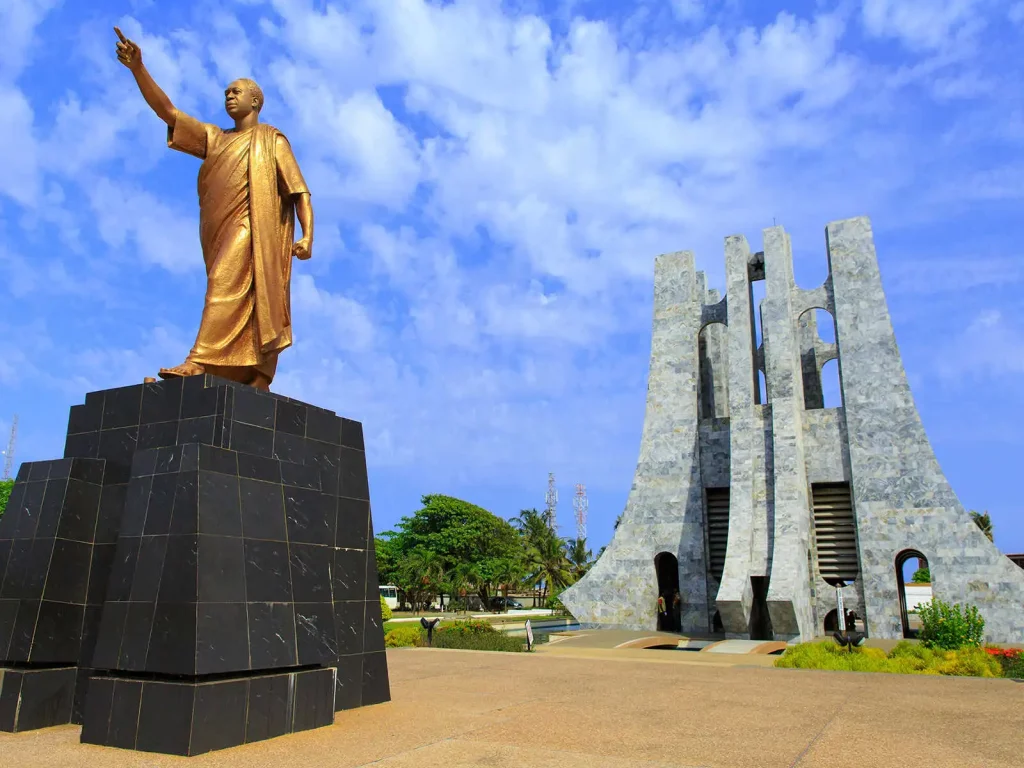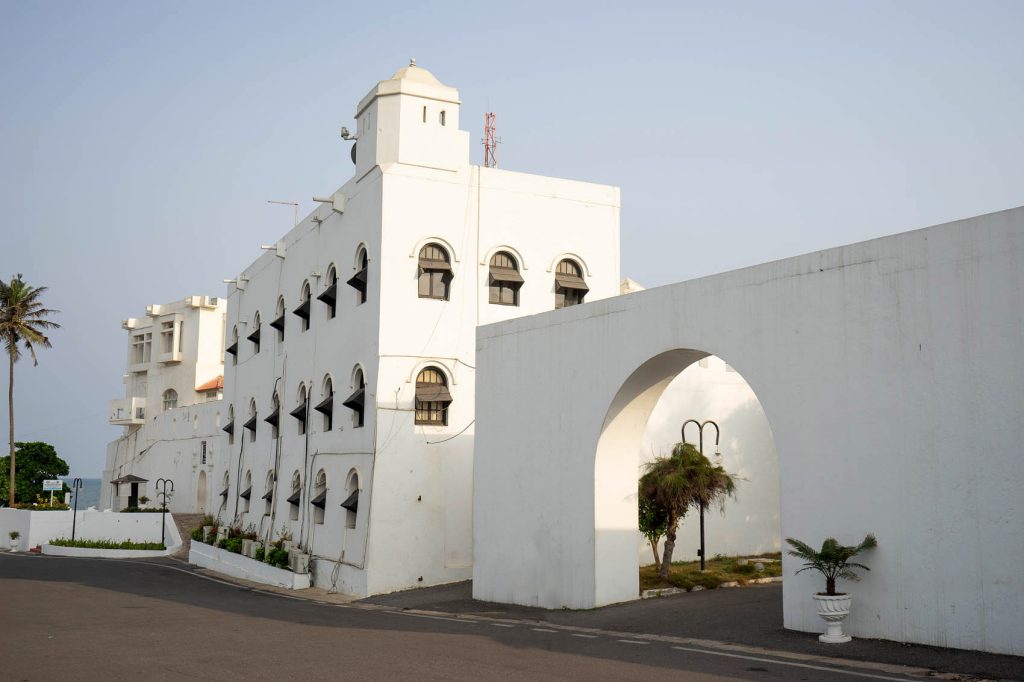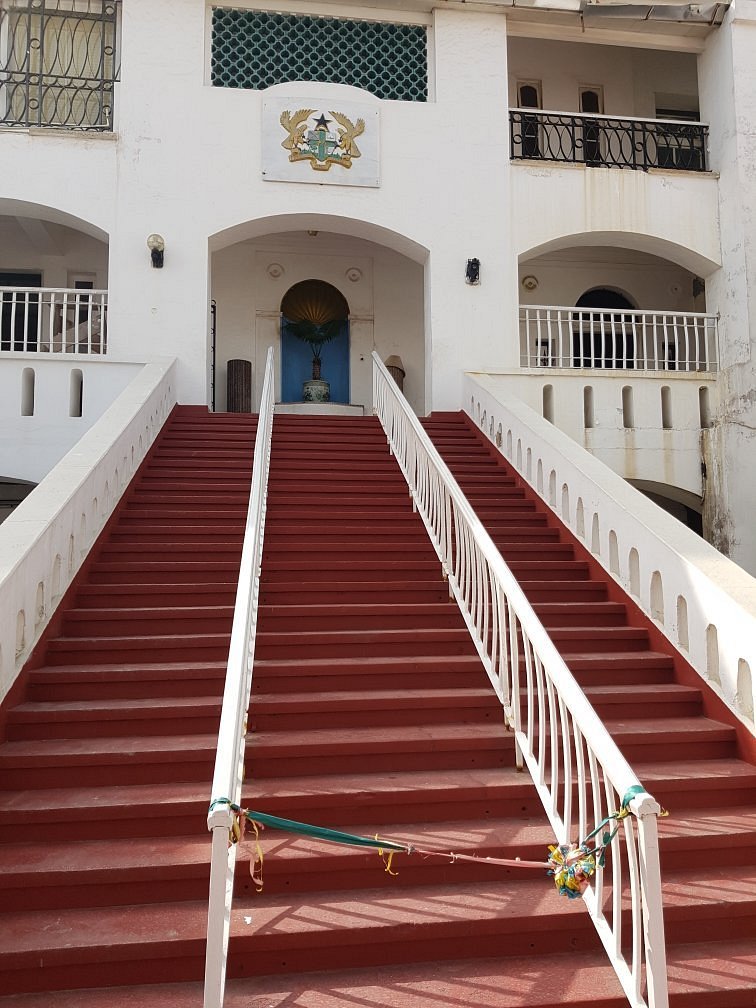Explore The Kwame Nkrumah Mausoleum and Osu Castle, and its High Significance in the country’s History
The Kwame Nkrumah Mausoleum, also known as the Kwame Nkrumah Memorial Park, is a memorial park and mausoleum dedicated to Kwame Nkrumah, Ghana’s first President and a key figure in the country’s fight for independence. Here are some key points about the Kwame Nkrumah Mausoleum:
- Location:
- The Kwame Nkrumah Mausoleum is located in Accra, the capital city of Ghana.
- Construction:
- The mausoleum was constructed to honor Kwame Nkrumah after his death in 1972. It was inaugurated on July 1, 1992.

- Design:
- The mausoleum is an impressive structure designed in the shape of an abstract sword, representing the fight for African independence. The sword is surrounded by a black star, which is a symbol on the Ghanaian flag.
- Burial Site:
- Kwame Nkrumah, along with his wife Fathia Nkrumah, is buried at the mausoleum.
- Museum and Artifacts:
- The mausoleum houses a museum that contains artifacts, photographs, and personal belongings of Kwame Nkrumah. Visitors can learn about his life, leadership, and the struggle for independence.
- Symbolism:
- The mausoleum is not only a burial site but also a symbol of Ghana’s quest for independence and its dedication to the ideals of Kwame Nkrumah. It stands as a national monument and a place of reflection.
- Independence Arch:
- The Independence Arch, another iconic structure, is located nearby. It symbolizes Ghana’s attainment of independence from British colonial rule in 1957.
- Declaration of Ghana’s Independence:
- The site holds historical significance as the spot where Kwame Nkrumah made the declaration of Ghana’s independence.
- Museum:

- The mausoleum features a museum that displays objects from various stages of Kwame Nkrumah’s life, offering visitors insights into his journey and contributions.
- Architectural Symbolism:
- The building is designed to represent an upside-down sword, symbolizing peace in Akan culture. The mausoleum is clad in Italian marble, with a black star at its apex, symbolizing unity.
- Interior Features:
- Inside the mausoleum, there are marble flooring and a mini mastaba-looking marble grave marker surrounded by river-washed rocks. A skylight at the top illuminates the grave.
- Surrounding Water:
- The mausoleum is surrounded by water, symbolizing life.
- Nkrumah’s Political Journey:
- Kwame Nkrumah’s political journey, beginning after twelve years abroad, is highlighted. He founded the Convention People’s Party and played a crucial role in achieving Ghana’s independence from Britain in 1957.
- Presidency:
- In 1960, Nkrumah was elected as the president of Ghana under a new constitution.
- National Events:
- The Kwame Nkrumah Mausoleum is a venue for national events, ceremonies, and celebrations. It holds significance as a place where Ghanaians gather to commemorate important occasions.
- Tourist Attraction:
- The mausoleum is a popular tourist attraction, drawing visitors interested in Ghana’s history, political leaders, and the struggle for independence.

The Kwame Nkrumah Mausoleum serves not only as a resting place for the late president but also as a symbol of Ghana’s struggle for independence and a tribute to Nkrumah’s vision and leadership. The architectural and symbolic elements contribute to the significance of the mausoleum as a national monument.

If you plan to visit the Kwame Nkrumah Mausoleum, I recommend checking with local authorities or tourism offices for the latest information on visiting hours, events, and any additional details that may have changed since my last knowledge update in January 2022.
The Osu Castle
The Osu Castle is a historic fortification located in Accra, Ghana. Here are key points about the Osu Castle:
- Location:
- The Osu Castle is situated in Osu, a district in central Accra, the capital city of Ghana. It is positioned along the coast of the Gulf of Guinea.
- History:
- The castle has a complex history and has undergone various transformations over the centuries. It was originally built by the Danes in the 17th century as a trading post. It later served as a center for the trans-Atlantic slave trade.
- British Occupation:
- The British seized control of the Osu Castle from the Danes in 1850. Over the years, it became the seat of colonial administration and later the official residence of the Governor of the Gold Coast (now Ghana).

- Independence Ceremony:
- One of the significant historical events at the Osu Castle was the independence ceremony held on March 6, 1957, when Ghana gained independence from British colonial rule. The first President of Ghana, Kwame Nkrumah, raised the national flag at the castle during the ceremony.
- Name Change:
- After independence, the castle underwent a name change and became known as Christiansborg Castle. The term “Osu Castle” is sometimes used to refer to the same historic structure.
- Government Use:
- Christiansborg Castle, or Osu Castle, continued to serve as the seat of government in post-independence Ghana. It housed the offices of the President and other government officials.
- Presidential Residence:
- The castle served as the official residence of Ghana’s presidents, including Kwame Nkrumah and subsequent leaders, until the construction of the Jubilee House (also known as the Flagstaff House) as the new presidential residence.

- Cultural and Historical Significance:
- The Osu Castle is a symbol of Ghana’s history, from the colonial period to independence. It reflects the struggles and triumphs of the nation.
- Visitors and Tours:
- The castle is open to visitors, and guided tours are available. Tourists and locals alike visit the site to explore its historical significance and learn about Ghana’s past.
Please note that information may have changed since my last update. If there have been any significant developments or changes to the status of the Osu Castle, I recommend checking with local sources or authorities for the latest information.
